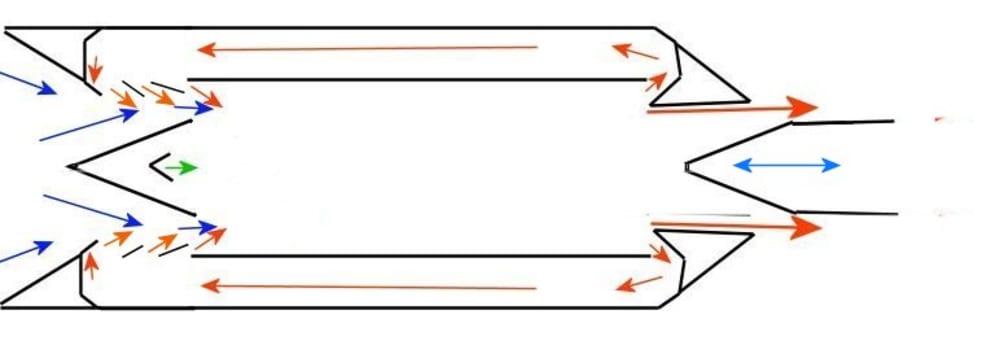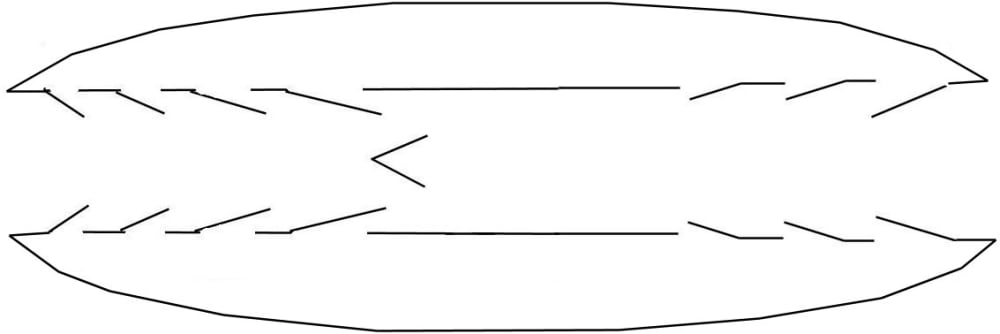Inductor Jet Engine
A jet engine with no moving parts. Compression is achieved by extracting 60% or more of the exhaust energy and injecting it directly into the incoming air stream to induce and compress the intake air. The intake air's kinetic energy is converted to pressure in a divergent zone. Fuel is added and the expanding gases exit the larger area at the rear of the combustion zone.
This type of engine would need a large volume of compressed air to get it started. There could be multiple re circulation (extraction and injection) pathways where the exhaust energy is pumped into the compression zone at specific stages to achieve higher compression ratios. Heat from the re-circulated exhaust adds energy back into the combustion zone.
A toroidial vortex is created as the hot gasses circulate to the inlet and this amplifies the inductor flow rates. Stretching the longitudinal axis of the toroid flattens the engine nicely.
If each of the hot gas energy extraction pathways is contained in a separate flow path to the corresponding compressor inlet port, there would be a good matching of the gas flow rates with the corresponding pressure zone of the compressor.
The inductor could be started with a long squirrel cage blower where the blades formed the inlet inductor vents when stopped.
Major advantage of this concept, other than the having no moving parts, is that it could run the length of the wing and provide a much better propulsive efficiency as well as induced airflow over the upper surface of the wing.
Like this entry?
-
About the Entrant
- Name:Geoff Taylor
- Type of entry:individual
- Patent status:none





